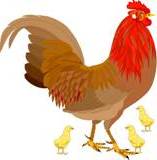|
Avian Influenza or Bird
Flue– The
Facts
Avian Influenza (also known as Bird Flu
or Fowl plague) is a highly infectious viral disease, affecting the
respiratory, digestive and/or nervous system of many species of birds.
Avian Influenza is a notifiable poultry disease, which if you suspect may be
present on your farm, must be relayed immediately to Defra. It is then the
legal responsibility of Government to control the disease through the
slaughtering of infected flocks, imposition of movement restrictions and
monitoring (3km restriction zones and 10km surveillance zones)
Avian Influenza is caused by a Type A
influenza virus. There are two types, low pathogenicity (LPAI) and high
pathogenicity (HPAI). LPAI has been found to be present in some areas of
the global wildfowl but does not always show clinical symptoms. There is a
low risk of migrating birds bringing LPAI to the UK. Of more concern is the
potential of some LPAI strains to mutate into HPAI, especially when
introduced into poultry populations.
Most outbreaks have originated from
migrating waterfowl passing the infection to local wild bird species, which
in turn, pass it to domestic poultry, especially those kept outdoors.
Spread from bird to bird within a flock
is via faeces, saliva and exhaled moisture droplets containing virus
particles. Research has also shown that any infection is made worse by poor
environmental factors such as dust, ammonia, concurrent infection with other
pathogens, such as Mycoplasmas, E.coli, other respiratory viruses and
also the age of the bird, species and any nutritional deficiencies
An important point to make is that avian
influenza is a disease of birds caused by influenza viruses closely related
to human influenza viruses. However, the major concern
in relation to avian influenza is the possibility of the avian virus
transforming to a human influenza virus. In South East Asia, where millions
of poultry have been infected and slaughtered, only a small number of people
have died after having been in very close contact with diseased or dying
birds.
The NFU have been
working closely with Defra, together with a number of stakeholders to
develop a workable contingency plan and communication link, should we have
to deal with an outbreak.
Transmission
Ø
Direct contact with secretions from infected birds,
especially faeces
Ø
Contaminated feed, water, equipment and clothing
Ø
Clinically normal waterfowl and sea birds may
introduce the virus into flocks
Ø
Broken contaminated eggs may infect chicks in the incubator
How do I minimise the risks?
Maintaining high levels of bio-security
on farm is key to the control of this disease. Transmission of the virus
can be minimized by limiting the movement of people and machinery onto sites
and where possible limiting contact with other poultry, waterfowl and pigs.
The main points:
Ø
Careful monitoring of poultry to enable early detection of changes in
behaviour and feed consumption is essential. Other changes to look out for
include increased levels of mortality, respiratory signs, changes in water
and feed consumption and drop in egg quality and production levels
Ø
Prompt consultation with your veterinary surgeon if you have any concerns
Ø
Ensure that wild birds, dogs, cats, rodents are excluded from poultry houses
Ø
Use of foot dips and change of overalls/footwear. All visitors to the
Poultry Unit must adhere to this requirement
Ø
Any feed spillages that occur around a feed bin should be immediately
cleaned up to avoid wild birds congregating in that area
Ø
Poultry must have access to a supply of clean, fresh drinking water. Access
to standing water must be restricted to free range birds, as this may
potentially have been contaminated by wild birds
Symptoms
Birds infected with avian influenza have
been known to exhibit a wide variety of symptoms, which may manifest as
sudden high mortality with no prior warning. However, other clinical
symptoms include:
Ø
Onset of respiratory noises/respiratory distress
Ø
Excessive fluid leakage from the eyes and nostrils
Ø
Oedema (swelling) of the head, neck and around the eyes
Ø
Combs and wattles may become dark in colour (Cyanosis), due to subcutaneous
hemorrhaging
Ø
Diarrhoea – bright green changing to white
Ø
Drop in or cessation of egg production
Ø
Dullness and lack of appetite
Ø
The area between the hocks and feet may show signs of diffuse hemorrhaging
Ø
Marked depression
Further information:
The websites listed below contain useful
advice and information on avian influenza, in terms of both human and animal
health:
Defra
www.defra.gov.uk/animalh/diseases/notifiable/disease/ai/index.htm
Health Protection Agency
www.hpa.org.uk/infections/topics_az/avaininfluenza/menu.htm
World Health Organisation
www.who.int/topics/avian_influenza/en
NFU
www.nfuonline.com/stellentdev/groups/public/documents/ianda/farmerstoredoublebi_ia434be6c1.hcsp
EUROPA
http://europa.eu.int/comm/food/animal/diseases/controlmeasures/avian/index_en.htm
Latest news on Europe:
http://europa.eu.int/rapid/showInformation.do?pageName=middayExpress&guiLanguage=en
RSPB
http://www.rspb.org.uk/policy/avianinfluenza.asp
Food Standards Agency
http://www.food.gov.uk/news/newsarchive/2005/oct/avianflu
Department of Health
http://www.dh.gov.uk/PolicyAndGuidance/EmergencyPlanning/PandemicFlu/fs/en |











